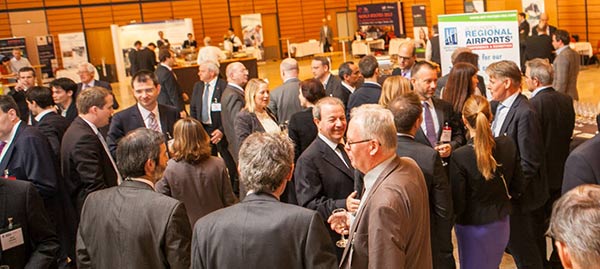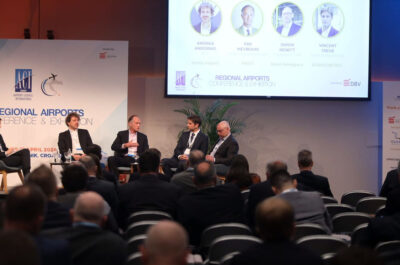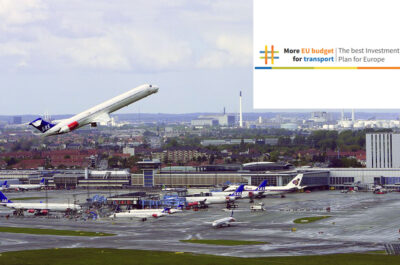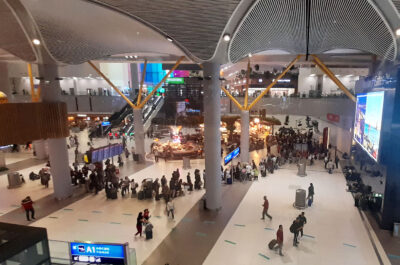Representatives of regional airports from all over Europe gather in Vilnius on May 12th, for the 9th annual ACI Europe Regional Airports Conference & Exhibition, hosted by Lithuanian Airports. The event provides an opportunity to review trading conditions and key challenges for Europe’s regional airports. As usual, it was preceded by a plenary meeting of ACI Europe’s Regional Airports Forum – which is celebrating 10 years as the industry‘s unique platform for regional airports. Improving traffic conditions Along with other segments of the
Representatives of regional airports from all over Europe gather in Vilnius on May 12th, for the 9th annual ACI Europe Regional Airports Conference & Exhibition, hosted by Lithuanian Airports.
The event provides an opportunity to review trading conditions and key challenges for Europe’s regional airports. As usual, it was preceded by a plenary meeting of ACI Europe’s Regional Airports Forum – which is celebrating 10 years as the industry‘s unique platform for regional airports.
Improving traffic conditions
Along with other segments of the airport industry, regional airports are currently enjoying dynamic growth in passenger traffic: +8.9% in Q1 for airports with less than 5 million passengers per annum and +7.6% for non-capital airports within that same group.
This means that regional airports are performing in line with the industry average (+ 7.8%) – a welcome development following years of slower traffic recovery in the wake of the global financial crisis. Between 2008 and 2015, while Europe’s airports saw passenger traffic increasing by almost +25%, regional airports only achieved +14.4% in passenger traffic growth – with non-capital airports with less than 5 million passengers growing by just +9.2%.
Olivier Jankovec, Director General, ACI Europe commented “Since last year, regional airports have finally been catching up with their larger peers and are now seeing more dynamic passenger growth. Alongside generally improved macro-economic conditions in Europe, a big chunk of those gains is down to efforts by airports to remain competitive and secure air services beyond the usual peak seasons. It is also due to demand shifting from traditional North African destinations to European ones in response to security concerns. Yet, if there are winners, there are also losers – no two markets look alike and airport competition is fiercer than ever, with airlines essentially dictating the terms under which they decide to operate.”
Economic sustainability challenge
The traffic recovery coupled with a consistent focus on cost-cutting has helped to improve the financial standing of regional airports. While 66% of airports with less than 5 million passengers per annum were unprofitable in 2013, this percentage is now down to 56%. However, the improvement benefitted mainly larger regional airports – not smaller ones. 77% of airports with less than 1 million passengers per annum remain loss making, a percentage unchanged since 2013.
Nevertheless, the positive externalities and the value the smaller regional airports bring as a lifeline between their communities and the wider world need more recognition and support. If we are to maintain a socially-inclusive society in Europe, regional airports are a vital part of the puzzle.
In this context, it is no surprise that when moving forward with airport privatisation, several EU countries have chosen to maintain or even create integrated airport networks – as a way to address these economic challenges.
This has been the case of Portugal (ANA), Spain (Aena) and most recently Greece. This option has also been chosen by Lithuania, which has brought its three national airports (Vilnius, Kaunas and Palanga airports) under a single entity and is presently considering transferring the management of these airports to a concession holder.
New connectivity opportunities and more regulatory challenges
Along with passenger traffic, connectivity has also improved for regional airports – although at a slower pace. 24% of regional airports still have direct connectivity levels below their pre-crisis (2008) peak, compared to just 5.6% of larger hubs.
For now, most regional airports are focusing their route development strategies on Low Cost Carriers (LCCs). LCCs are the only ones growing their intra-European route network this summer (+2%), while both Large Full Service Carriers and Regional Carriers keep retrenching (-7% and -17% respectively). However, the focus of LCCs has also moved towards larger markets in search of higher yields, with their approach to regional airports becoming even more opportunistic. Accordingly, the number of LCC bases at regional airports across Europe – 93 bases at 78 airports – remains below its 2014 level (98 bases at 82 airports).
Yet, new niche opportunities are potentially opening up for larger regional airports with LCCs now exploring long-haul operations. This would undoubtedly boost regional air connectivity and thus give a new impetus to local economic development. The example of Norwegian Airlines’ plan to open direct connections from Cork airport to the US is a case in point. However, it is worrying that such promising development is held hostage by political interference – with the US Government so far not complying with the terms of the 2007 EU-US Aviation Agreement.
Jankovec said “With trading conditions for aviation overall being the best in years, the main challenge actually remains the policy and regulatory environment. We need regulations that better reflect and support market dynamics. This is the case in particular for airport charges – which generally continue to be regulated with a rear-view, as if airports were still monopolists. We also need regulations that put consumers at the forefront and boost air connectivity. This means ignoring protectionist forces and overcoming resistance to change by moving forward on open skies. This also means coming to terms with the Single European Sky and doing away with aviation taxes.”
He added ”The European Commission’s Aviation Strategy goes in these directions, connecting the dots between aviation and the economy– but ultimately, it needs meaningful support and alignment from Member States if it is to have real impact.”
Tatiana is the news coordinator for TravelDailyNews Media Network (traveldailynews.gr, traveldailynews.com and traveldailynews.asia). Her role includes monitoring the hundreds of news sources of TravelDailyNews Media Network and skimming the most important according to our strategy.
She holds a Bachelor's degree in Communication & Mass Media from Panteion University of Political & Social Studies of Athens and she has been editor and editor-in-chief in various economic magazines and newspapers.

































































































































































































































